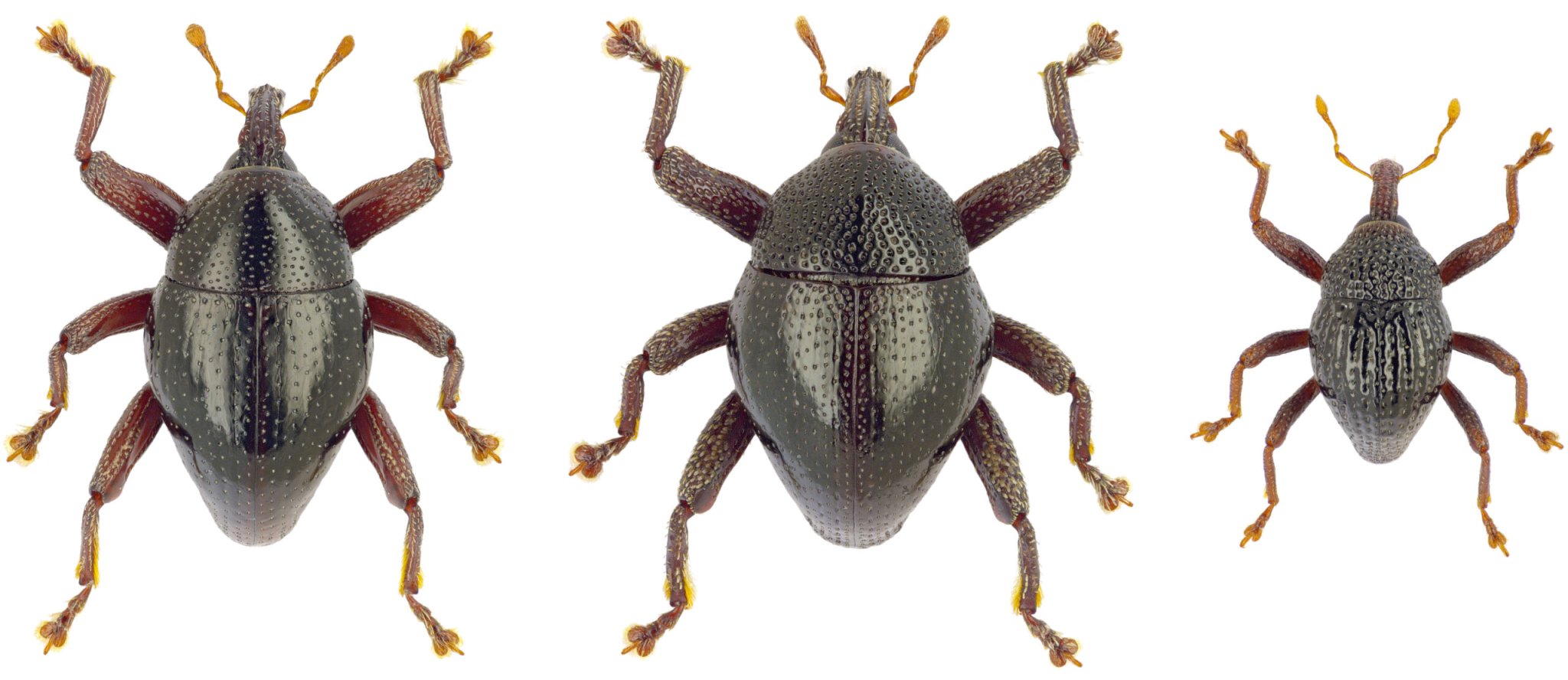

Just as Michael Jordan is basketball’s greatest player of all time, and Serena Williams is tennis’, Alexander Riedel is the GOAT of finding, identifying, and naming weevil beetles.
Riedel, an entomologist at the Museum of Natural History Karlsruhe in Germany, unveiled a whopping 103 new weevils that live in tropical mountain forests on the Indonesian island of Sulawesi in a study published Thursday in ZooKeys. Before this work, we only knew about one weevil on the island, described way back in 1885.
The finding is welcome news. Entomologists are racing to catalog as many insect species as possible before they go extinct, which is happening at an alarming rate thanks to human influence on the planet.
“Identifying new species is incredibly important because our window for detecting them is closing,” says Brett Ratcliffe, an entomologist at the University of Nebraska who wasn’t involved in the new study. “The planet is losing species, especially insects, to extinction before we even discover them. Each species represents millions of years of evolution that is unique to each one, and can never be replaced once it’s gone.”
Riedel has a similar perspective. After finding his first few novel weevils decades ago, he became enthralled by the little insects. “The interest increased once I realized how hyperdiverse they were, and that no one had noticed that before,” he tells PopSci in an email. For whatever reason, weevils—teeny herbivorous beetles, usually with elongated, trunk-like snouts—branch off into different species fast and often. Determined to describe as many of them as possible, Riedel became a weevil-identifying machine.
Back in 2013, for example, he and colleagues from Germany and Indonesia published a paper describing 101 new weevil species in New Guinea. Eager to share their work and not waste time painstakingly naming each bug, the team simply plucked surnames from the New Guinean phonebook. (Trigonopterus moreaorum is based on the popular name “Morea,” for example.)
Finding so many beetles there, as well as on neighboring islands Borneo and Java, Riedel knew Sulawesi had to have more than just one weevil. Of course, he was right—and he had to start the name game all over again. “It’s a lot of work to formally describe them,” he says. “Having accomplished that feels good, because it is finally done and fills in a blank in our knowledge.”
Ratcliffe knows the struggle of naming a new creature. “It’s a challenge because we try to coin an epithet that’s descriptive,” he says, perhaps referencing the insect’s appearance or habitat. “To do so for a hundred species is almost mind-boggling.”

So it makes sense that scientists will often turn to pop culture to name their discoveries—just as Riedel did for his most recent batch of weevils. He named one tiny green weevil Trigonopterus yoda, after the vertically-challenged Jedi master from Star Wars. There are also T. asterix, T. obelix, and T. idefix, named after three main characters in a French comic series. T. artemis and T. satyrus come from the Greek gods Artemis and Satyr. Riedel also named a pair of weevils after Francis Watson and James Crick, scientists who aided in discovering the structure of DNA. (Unfortunately, he did not name a weevil after Rosalind Franklin, who helped pioneer that research.)
That handful hardly puts a dent in the grand total, so Riedel named much of the lot after their unique body parts (like T. analis for a weevil with a weird… well… anus) and habitats (T. volcanorum dwell on active volcanoes). And in a touching turn of events, he named T. jasminae and T. prismae for his daughter and wife, respectively. When I asked if he had a favorite weevil, Riedel said, “Not really. They are all of interest to me, especially how they differ from each other. It’s like having several children—usually you don’t know who you like best.”
And the work is not nearly done. Riedel and his study co-author Raden Pramesa Narakusumo, a biologist at the Indonesian Institute of Sciences, expect that the Sulawesian weevil count should double with additional surveys. They even have 30 more bugs on-hand that they couldn’t say with 100 percent certainty are novel species—a process that involves studying the insects’ tiny genitals and sequencing their DNA.
Going forward, Riedel wants to take a closer look at the weevils in New Guinea and better understand their evolutionary history. “That’s really the epicenter of their diversity,” he says, “and there are many interesting stories there to be told.”
And, of course, he’ll continue to be the GOAT at finding new weevils. “We should have an idea of what other creatures we share the planet with.”
